Automotive lab Products
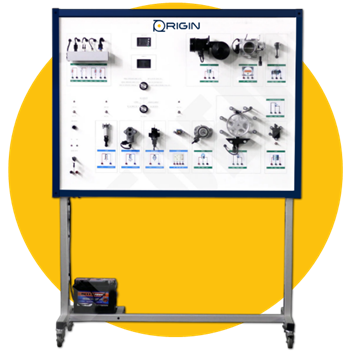
Sensors and actuators for automotive
Code : (MAUT-71)
The training system for sensors and actuators is intended to provide comprehensive understanding of different sensor and actuator technologies used in modern automotive systems.
Trainees will have the opportunity to conduct varied experiments, inspect various components of automotive intake and exhaust systems, and evaluate the signals produced.
• Inspecting the frequency output of the manifold pressure sensor.
• Checking the analog manifold pressure sensor with temperature detection.
• Examining the analog output of the manifold pressure sensor.
• Reviewing the throttle valve equipped with sensors and actuators.
• Verifying the functionality of the knock sensor.
• Testing the temperature sensor for engine coolant temperature (ECT).
• Evaluating the frequency output of the mass air flow sensor.
• Assessing the analog output of the mass air flow sensor.
• Inspecting the pedal accelerator.
• Conducting a full system examination.
• Getting familiar with various types of sensors and actuators in automotive systems.
• Assessing the performance of the ignition system.
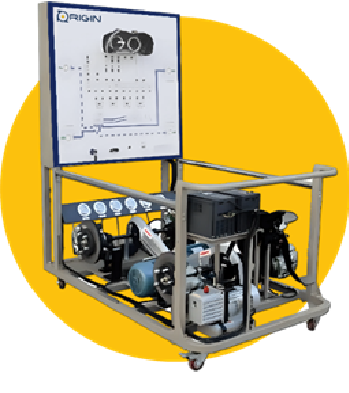
Petrol Engine cutaway
Code : (MAUT-72)
The petrol engine cutaway trainer is an educational tool that displays a real 4-cylinder petrol engine 1500 CC which has been modified to show its internal parts while still allowing them to move.
This unit is designed to illustrate the internal structure and design of a petrol engine, as well as the functioning of the four cylinders with the help of an electric motor connected to the engine to provide movement.
The internal parts of the petrol engine are color-coded to make it easier to identify its major components.
• Studying the internal structure of the electronic petrol engine.
• Getting to know the essential parts of the IC petrol engine.
• Examining the order of the four-stroke cycle in the IC petrol engine.
• Watching the movement of the flywheel, camshaft, and crankshaft to
• gain insight into the engine's operational principle.
• Noting the placement of fuel injectors and glow plugs in petrol engine.
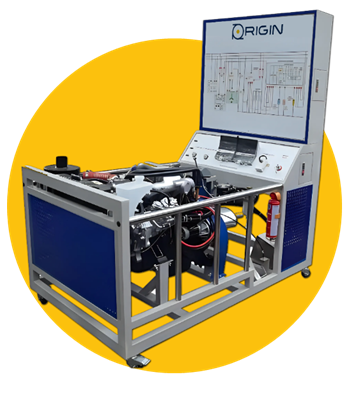
Diesel Engine cutaway
Code : (MAUT-73)
The diesel engine cutaway trainer is an educational device that presents a genuine 4- cylinder 2500 CC electronic injection diesel engine that has been cut open, modified, and adapted to maintain the functionality of its internal components.
It is designed to illustrate the internal structure and layout of the diesel engine, as well as the operational principles of the four cylinders, made possible by an electric motor connected to the engine to provide movement.
• Studying the internal structure of the electronic injection diesel engine.
• Getting to know the essential parts of the IC diesel engine.
• Examining the order of the four-stroke cycle in the IC diesel engine.
• Watching the movement of the flywheel, camshaft, and crankshaft to
• gain insight into the engine's operational principle.
• Noting the placement of fuel injectors and glow plugs in diesel engines.
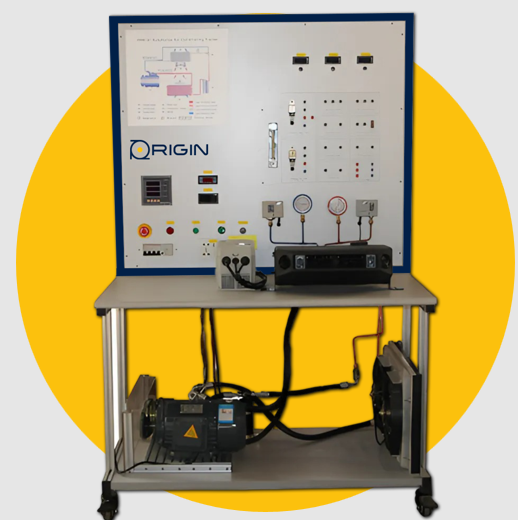
Car air conditioner training unit
Code : (MAUT-74)
The trainer for automotive air-conditioners enables students to analyze the parts and functionality of automotive air-conditioning systems.
This learning tool includes authentic components from automotive air-conditioners, powered by an electric motor in place of the engine.
It also has simulation switches for faults to help improve the trainees' ability to troubleshoot.
• Examining the functioning of an actual automotive air conditioning unit.
• Analyzing the alteration in the condition of refrigerant as it progresses through the air conditioning cycle.
• Illustrating the cycle using a P-H diagram.
• Computing the system's coefficient of performance (C.O.P) at different compressor speeds.
• Exploring the impact of compressor rotational speed on C.O.P.
• Identifying system malfunctions
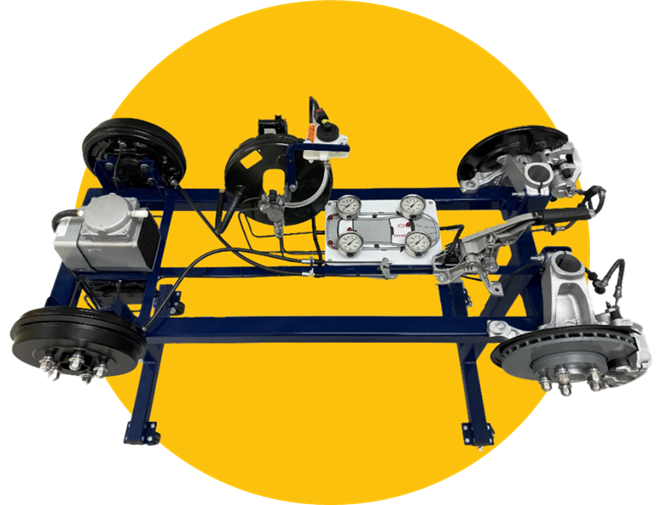
Wheel Speed sensors kit
Code : (MAUT-75)
The training system for wheel speed sensors enables a direct comparison of established methods using inductive and Hall sensors with magneto-resistive sensors.
Additionally, practical training includes inspections of the pulse generator ring and magnetic encoder for mechanical purposes.
• Inductive-type sensors: their design and operation
• Hall effect sensors: how they are designed and how they function
• Magneto-resistive sensors: design and function
• Carrying out measurements and diagnosing inductive-type sensors
• Carrying out measurements and diagnosing Hall effect sensors
• Carrying out measurements and diagnosing magnetoresistive sensors
• Interpreting and understanding circuit diagrams
• Checking the mechanical functions of a magnetic encoder
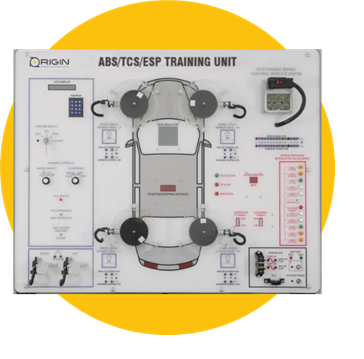
ABS/TCS/ESP training kit
Code : (MAUT-76)
The ABS/TCS/ESP Kit is created to simulate both traditional braking and electronic braking systems.
It provides detailed explanations of the electronic aids utilized in braking systems, enabling trainees to understand the control strategies implemented by ABS, EBD, ESP, TCS, EBA, and DSR, with a strong focus on the resultant vehicle dynamics.
• Examination of the brake system design factors and their impact on vehicle performance.
• Assessment of the trade-offs between stability, maneuverability, and stopping capability.
• Study of the constituents, performance, as well as the overall control system and control
variables of the subsequent systems:
- Anti-lock brakes (ABS)
- Electronic brake force distribution (EBD)
- Electronic stability program (ESP)
- Traction control (TCS)
- Emergency brake assist (EBA)
- Downhill speed regulation (D
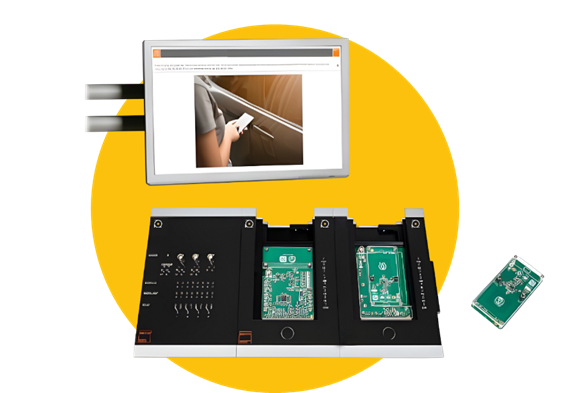
CAN bus training kit
Code : (MAUT-77)
The CAN Bus Communication Training Kit is designed to provide hands-on experience with Controller Area Network (CAN) bus technology.
Ideal for students and engineers, this kit includes a set of educational tools and components that simulate real-world CAN bus environments.
Identifying various bus systems in vehicles:
• Introduction to the topology and components of a CAN bus in a vehicle
• Introduction to the difference between low-speed and high-speed CAN buses
• Introduction to the principles of addressing and arbitration on a CAN bus
• Introduction to the structure of a message frame for a CAN message
• Analysis of CAN packets using the CAN monitor and an oscilloscope
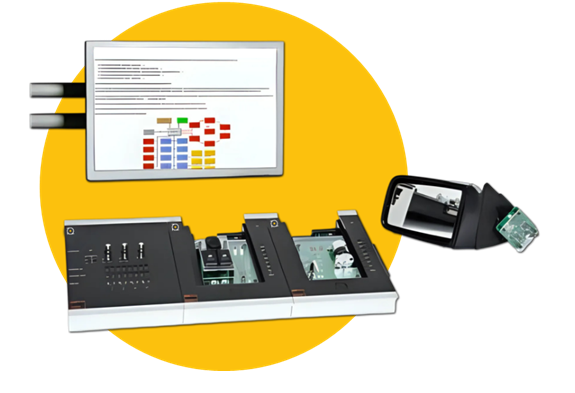
LIN bus training kit
Code : (MAUT-78)
The LIN Bus Communication Training Kit provides an interactive learning platform for understanding Local Interconnect Network (LIN) bus technology.
Perfect for students and engineers, this kit offers practical tools to explore and master LIN communication
Identifying various bus systems in vehicles
• Introduction to the topology and components of a LIN bus in a vehicle
• Development of bus systems in motor vehicles
• Structure of a packet frame for an LIN message
• Introduction to the structure of a message frame for a LIN message
• Interpretation of LIN messages using LIN monitor and oscilloscope
